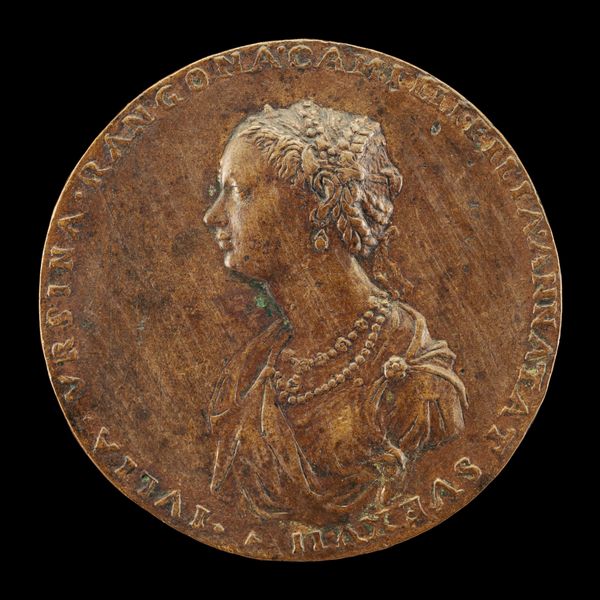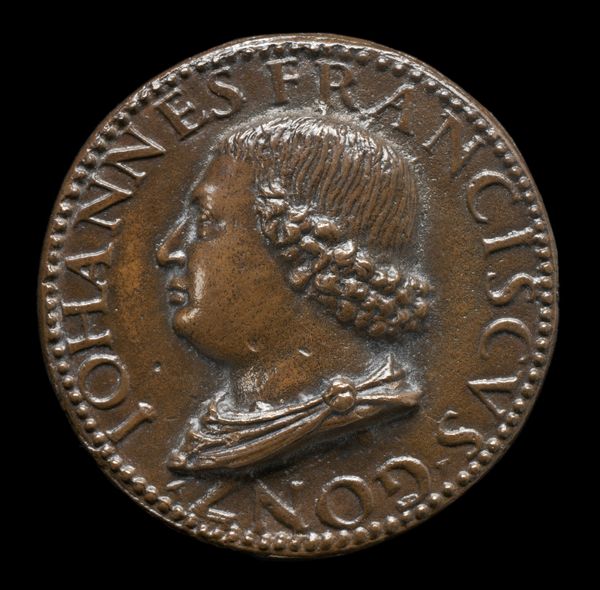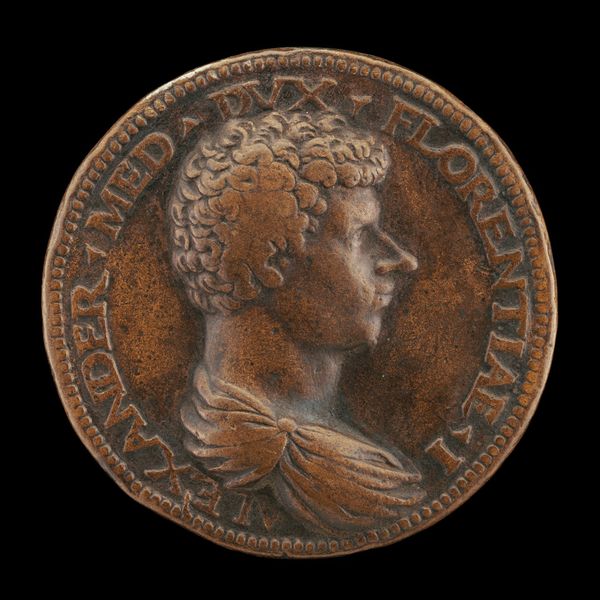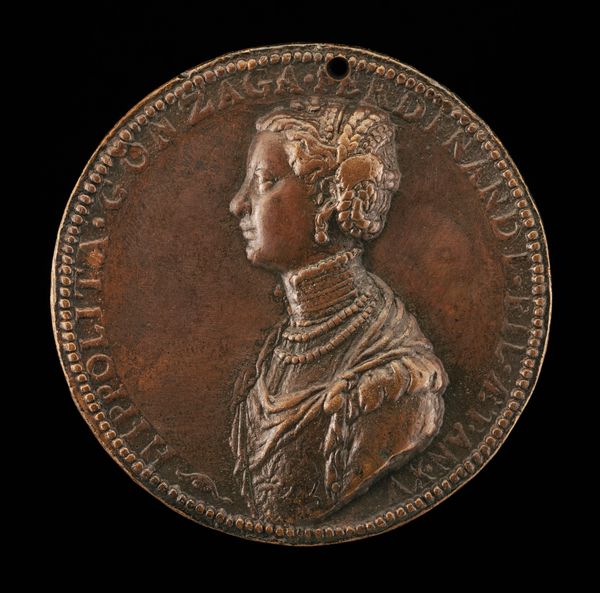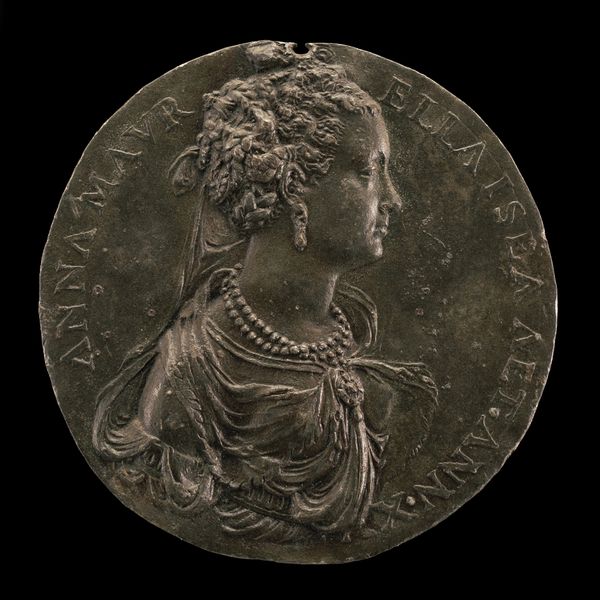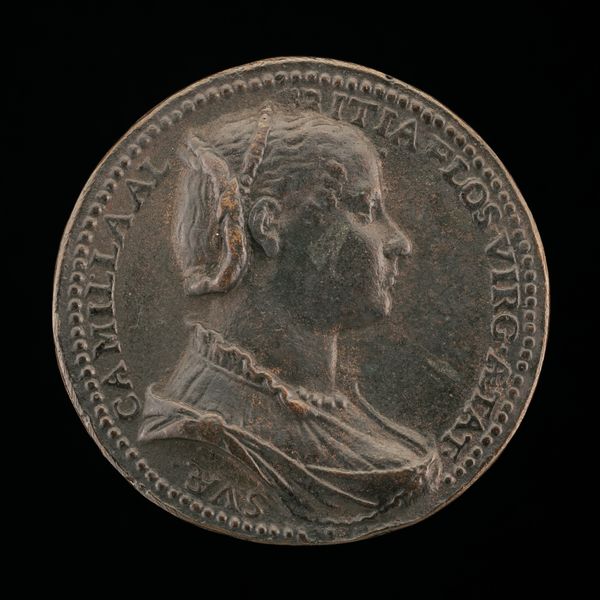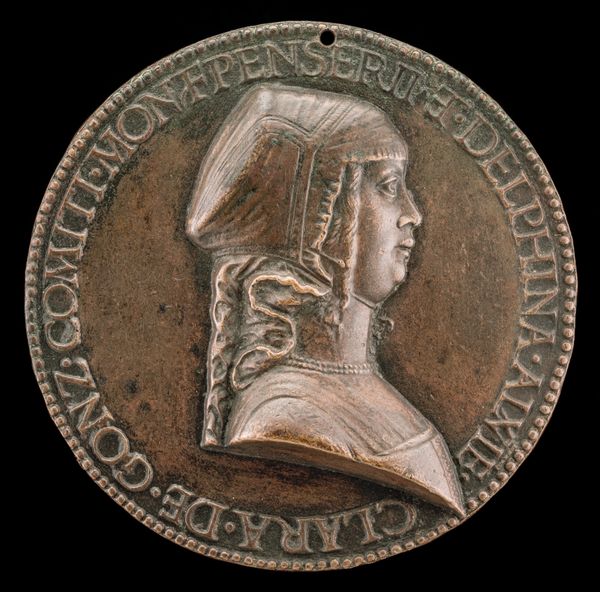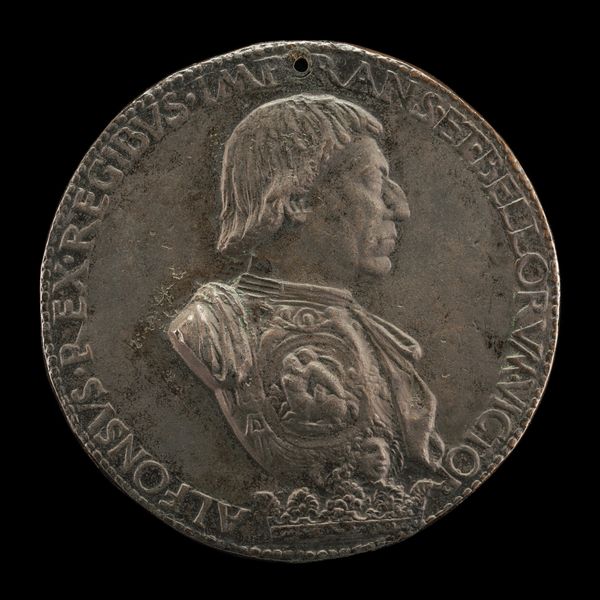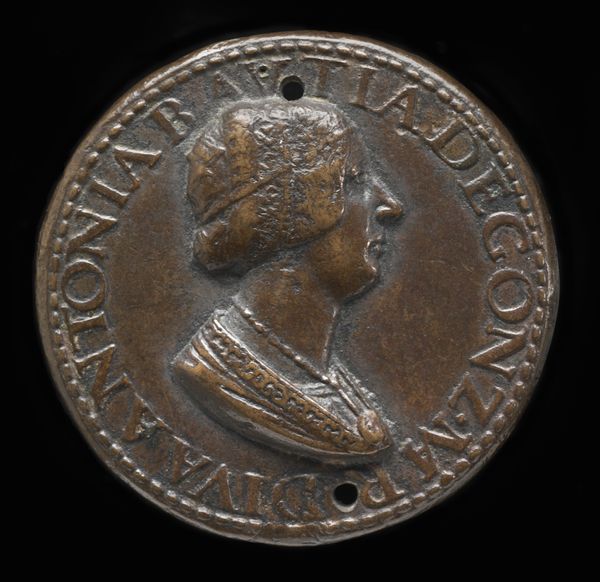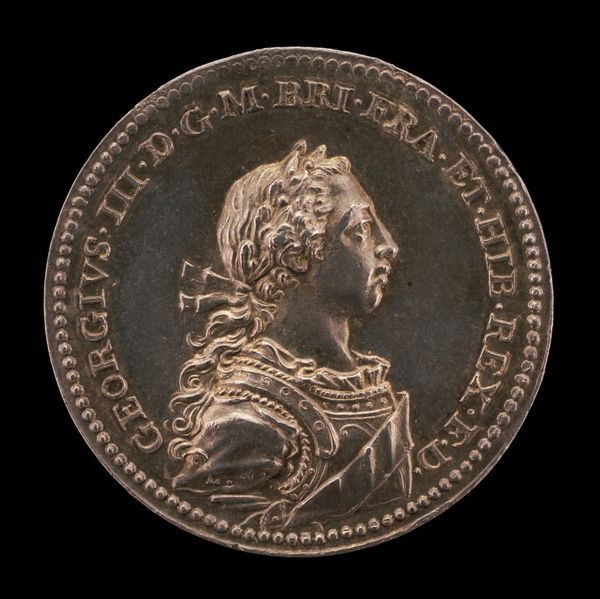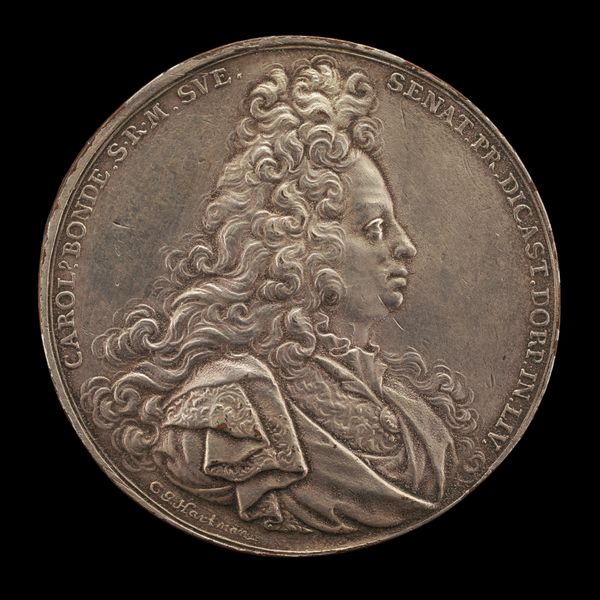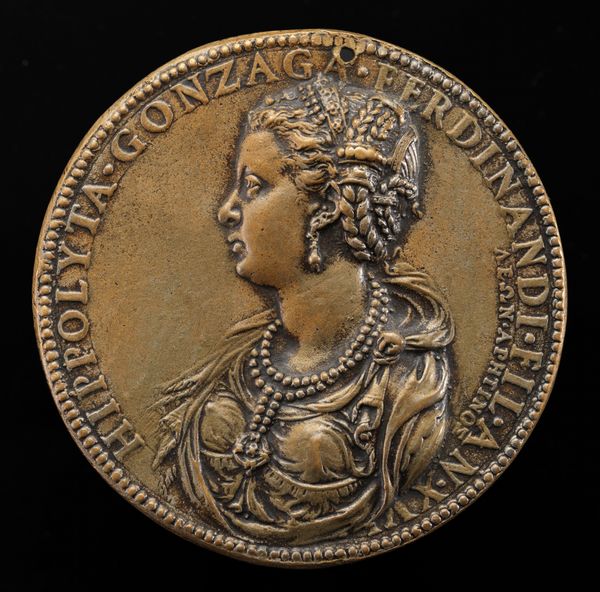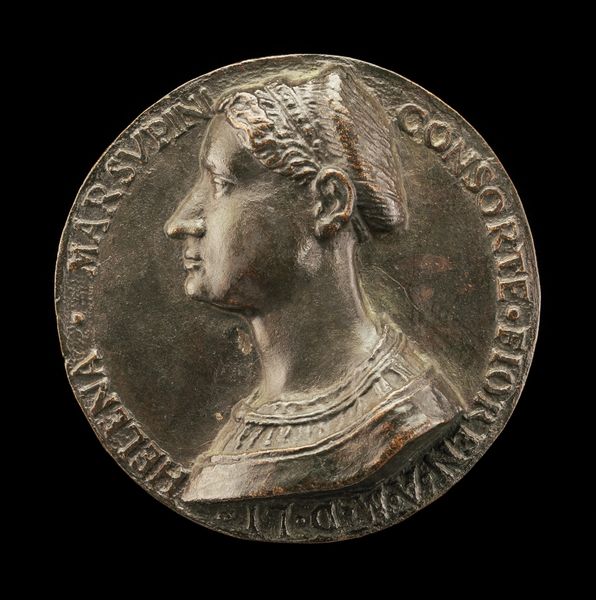![Emperor Claudius, 10 B.C.-54 A.D., Emperor 41-54 [obverse] by Varrone Belferdino](/_next/image?url=https%3A%2F%2Fd2w8kbdekdi1gv.cloudfront.net%2FeyJidWNrZXQiOiAiYXJ0ZXJhLWltYWdlcy1idWNrZXQiLCAia2V5IjogImFydHdvcmtzLzQ0NmVkOWUwLTM0OWYtNDAxZi05YTMxLTFlMTlmNTVkOThmMS80NDZlZDllMC0zNDlmLTQwMWYtOWEzMS0xZTE5ZjU1ZDk4ZjFfZnVsbC5qcGciLCAiZWRpdHMiOiB7InJlc2l6ZSI6IHsid2lkdGgiOiAxOTIwLCAiaGVpZ2h0IjogMTkyMCwgImZpdCI6ICJpbnNpZGUifX19&w=3840&q=75)
Emperor Claudius, 10 B.C.-54 A.D., Emperor 41-54 [obverse] c. 1450
0:00
0:00
metal, bronze, sculpture
#
portrait
#
medal
#
metal
#
sculpture
#
bronze
#
ancient-mediterranean
#
sculpture
Dimensions: overall (diameter): 8.98 cm (3 9/16 in.) gross weight: 267.04 gr (0.589 lb.) axis: 12:00
Copyright: National Gallery of Art: CC0 1.0
Editor: Here we have a bronze medal, “Emperor Claudius, 10 B.C.-54 A.D., Emperor 41-54”, made around 1450. It's a profile portrait, very stoic and serious. What strikes me is the inscription circling the portrait - it makes me think about power and how it's projected. What do you make of it? Curator: The inscription, combined with Claudius’s portrait, offers a fascinating window into the construction of imperial authority. These medals weren't just art; they were instruments of political messaging, part of the broader visual culture that sustained Roman power long after the Empire had fractured. What do you think about who these might have been designed *for*, centuries later? Editor: Maybe it's about keeping that memory alive? The imagery reminds the present of that history, sort of like today's politicians on TV? It shows what someone wants the public to think, and what they believe to be good for image-making. Curator: Precisely! This wasn't just about commemoration but active shaping of political memory. Notice the laurel wreath, the specific style of the lettering. Those design elements speak volumes about what aspects of Roman authority were being emphasized and for what contemporary audience. The key is to consider how even ostensibly “historical” art always reflects present-day concerns. Who owned these, displayed them, commissioned them...what stories did *they* want to tell about power? Editor: So it’s not just about Claudius; it’s also about the patrons who, hundreds of years later, wanted to evoke the idea of Roman authority for their own purposes. And by understanding who these patrons were, we see their specific needs and context...fascinating! Curator: Exactly. Looking at art like this, through a political and social lens, can unveil hidden power dynamics, intentions and cultural biases embedded within artistic expression, then and now. Editor: That definitely provides a new perspective for thinking about this bronze medal! It's great how it tells us a story about the past as well as the intentions of the more recent people behind its circulation and appreciation.
Comments
No comments
Be the first to comment and join the conversation on the ultimate creative platform.
